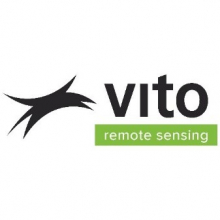
Objectives of the service
The overall purpose of the study is to prove the viability and sustainability of an integrated software package and/or services aimed at producing and delivering risk maps of mosquito presence and forecasts of their spread (potential), based on the integration of Earth Observation data and GNSS navigation technologies with in-situ sampling, terrestrial communication, modelling algorithms and GIS representation tools. Assessed will be not only the technical but also the operational, legal and end-user point of view.
Users and their needs
One class of target users for these maps are public health authorities supported by research institutes at regional and national level. A fundamentally different class of involved users are the public and private mosquito control companies. The VECMAP service will for now focus on these two user groups. As an output of the VECMAP first phase, the demand for data integration at European level has also been confirmed. Response to this particular need will in fact be subject to a separate project. The VECMAP service may eventually be expanded to include other vectors such as ticks and Culicoides (biting midges), as well as the dynamics of vector spreading or infections and disease. Non-European users and private companies such as insurance companies, pharmaceutical companies and insecticide producers may eventually be targeted.
Service/ system concept
From a sustainability and marketing point of view the consortium will explore the cost-efficiency and sustainability of different types of products and services which may come out of this study. Examples include:
- A commercial fully integrated service provided by a user friendly web-interface, for non-academic GIS users: e.g. national public health or local vector control agencies who want to plan their own activities. This will include a maintenance licence for upgrades and EO time series inputs.
- A full installation of the tool for advanced academic users such as PhD students and research groups.
- A full service, i.e. VECMAP "Service Mode", where the consortium acquires data and generates tailored outputs: e.g. a private company or international public health agency needing access to risk assessment maps and spatial analysis outputs.
Space Added Value
The space assets used are:
- Earth observation: to provide environmental data (e.g. land surface temperature, vegetation, land use) to be used in spatial distribution models based on both Low/Medium Resolution Remote Sensing data for eco-climatic envelope and High-Resolution Remote-Sensing data for landscape and habitat
- Geo-localisation: for geo-localising ground data, e.g. mosquito traps or origin of disease cases as well as for field inspectors/teams to locate/control the areas at risks and for accurate follow-up of control operations.
- SatCom may be considered for dedicated in-situ sensors that provide real-time environmental status info required by mosquito control users.
Current Status
The VECMAP Feasibility Study ran from November 2009 to April 2011 and has been successfully completed. The disease vector mapping support system has been prototyped and the planned services, based on operation of this system, have been conceptualized. The technical feasibility and viability have been demonstrated and a business plan has been developed.
VECMAP activities have been continued into the VECMAP Demonstration Project.
Prime Contractor(s)
Subcontractor(s)






